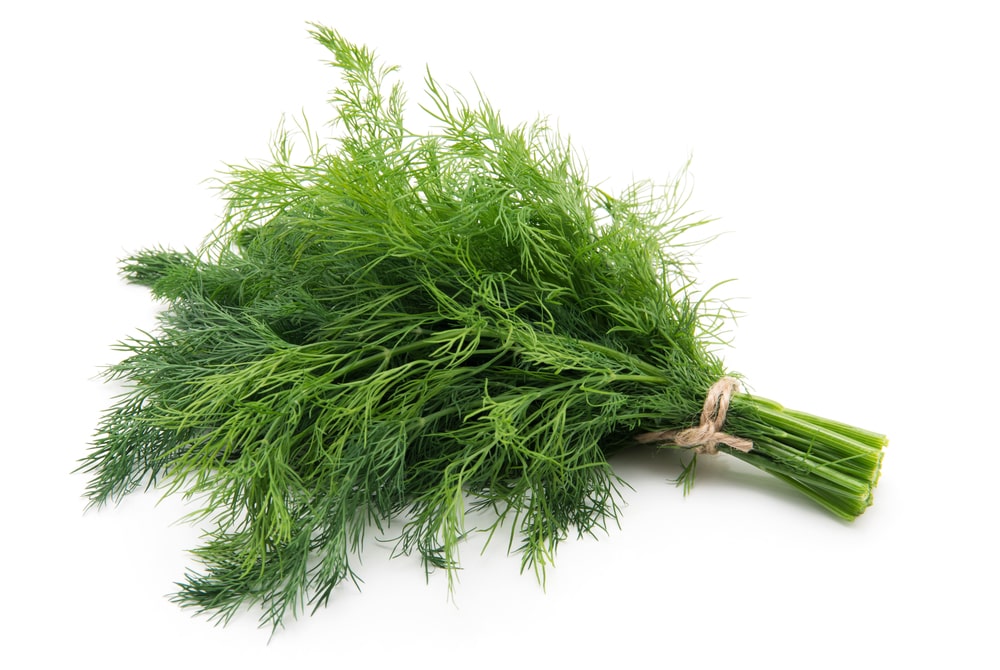
Dill, scientifically known as Anethum graveolens, is a well-known aromatic plant that is widely used in culinary practices around the world. This herbaceous plant, which belongs to the Apiaceae family, is not only known for its organoleptic characteristics but also for its numerous health benefits.
Dill is an annual herb that typically does not exceed one meter in height. It features a thin, striated stem that is divided into nodes, and it only branches out at the top where the umbel inflorescences arise. These inflorescences give way to numerous yellow flowers, which eventually mature into small brown fruits. These fruits, often improperly referred to as seeds, are actually achenes that ripen at the end of summer.

The leaves of the dill plant are thread-like and arranged in a spiral, predominantly concentrated at the lower part of the stem. They branch out just above the underground portion of the plant, which consists of a taproot and roots, bearing a striking resemblance to that of chicory. It's worth noting that dill can be easily confused with wild fennel, although their aroma and taste are quite distinct.
Dill is believed to have originated from the Northern Hemisphere, specifically south-west Asia. However, due to its adaptable nature, it has spread to many southern European regions. The plant's exact roots are a topic of debate among botanists, with some arguing that its presence in the Mediterranean basin cannot be solely attributed to human importation.
The plant thrives in temperate climates and is unable to tolerate extreme hot or cold conditions. Consequently, it's found more abundantly in hilly and low-mountainous regions. Dill is known for its remarkable adaptability, making it a subject of ambiguity regarding its preferred climate. It grows best in soil that is rich in calcium and silicon, with a neutral pH, good drainage, and low humidity.
Dill has been used since ancient times for a variety of purposes, ranging from medicine to cooking. The term Anethum, derived from the Greek term for "anise", refers to its therapeutic properties, while graveolens, a Latin term used in scientific classification, signifies the power of its aroma.
Traditionally, dill has been used to alleviate symptoms of various ailments such as colic pain, digestive difficulties, loss of appetite, and mild insomnia. It was also believed to increase diuresis and combat intestinal infestations. In the past, dill was even considered an aphrodisiac, a tonic for the body and mind, a cure for epilepsy, and a remedy against bad luck.
In modern times, dill is mainly used for its aromatic qualities in gastronomy. Both its leaves and fruits are edible and used in a variety of dishes, from seasoning fish to formulating composite flavors for meats and sauces. The seeds, rich in oil, are used in certain liqueur recipes and are a handy remedy against bad breath.
Dill is also used to produce an essential oil, which is beneficial in the creation of soaps and some types of deodorants. This essential oil, along with the fruits, is used in phytotherapy to treat dyspeptic disorders due to their stimulating, disinfectant, and spasmolytic properties.
Despite its marginal nutritional role in human nutrition, dill is rich in mineral salts and vitamins. However, it's important to note that the bioavailability of certain plant-based electrolytes, such as iron and calcium, is not comparable to those found in animal-based foods.
To conclude, dill is a remarkable herb that offers a plethora of benefits, from its culinary uses to its therapeutic applications. Its rich history, wide geographical spread, and unique characteristics make it a fascinating subject of study and a valuable addition to our diets.